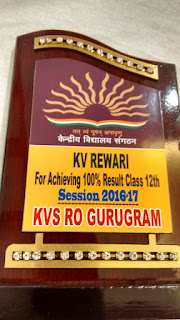As you might be aware that 'Innovation in Science Pursuit for Inspired Research' (INSPIRE) scheme is one of the flagship programme of Department of Science & Technology (DST), Government of India.
The scheme covers students in the age group of 10-32 years and has five components.
The first component, INSPIRE Award - MANAK (Million Minds Augmenting National Aspirations and Knowledge) is being executed by National Innovation Foundation – India (NIF) aims to motivate students in the age group of 10-15 years and studying in classes 6 to 10, to pursue Science and a Career in Research.
The scheme is aligned with the Action Plan for "Start-up India" initiative launched by the Hon'ble Prime Minister of India.
The objective of the scheme is to target one million original ideas/innovations rooted in science and societal applications to foster a culture of creativity and innovative thinking among school children. This will help address the societal needs through science and technology and nurture them to become sensitive and responsible citizens and innovation leaders of tomorrow.
Under this scheme student may submit innovative ideas / innovations through schools in any Indian language and the best 1 lakh ideas/projects will receive Rs. 10,000/- per student through Direct Benefit Transfer (DBT) and get a chance to participate in District Level Competition.
Ten per cent students will be shortlisted further to participate at State level Competition.
One thousand students will showcase their innovations at National level and finally, sixty innovative projects will be incubated completely (patent filing, value addition in technology and product development etc.) by NIF and will be displayed at Festival of Innovation (FOIN) at Rashtrapati Bhavan, New Delhi.
The most active schools and teachers will receive a certificate of appreciation.
Only the schools located in northeast region (Assam, Arunachal Pradesh, Manipur, Meghalaya, Mizoram, Nagaland, Sikkim, Tripura) and Jammu & Kashmir may send students' ideas/innovations through Post in the prescribed format (hyperlink given below and also available for download athttp://nif.org.in/inspire/2017/submit-inspire-idea) to National Innovation Foundation-India, with the envelope being superscribed as “INSPIRE MANAK Submissions”.
I request you to please organize an idea/innovation competition in your schools and submit best of 2 to 3 ideas/innovations immediately. I am looking forward for your active participation.
The last date for submitting ideas and innovations under INSPIRE Awards - MANAK has been extended till 15th Sept 2017.
For any query, please contact - 9638418605.
With warm regards
Vipin Kumar
Vipin Kumar
Director and Chief Innovation Officer
National Innovation Foundation-India, a Honey Bee Network Institution &
Autonomous Body of Department of Science and Technology, Govt. of India
Grambharti, Mahudi Road, Gandhinagar-382650 INDIA
Phone : +91 2764 261131, 32, 38, 39; Fax : +91 79 2673 1903;
























